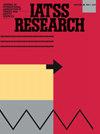应用机器学习和SHAP探索影响孟加拉国公路和非公路碰撞伤害严重程度的因素
IF 3.3
Q3 TRANSPORTATION
引用次数: 0
摘要
为了制定有效的预防措施和有针对性的干预措施,了解导致车祸的因素并量化它们如何影响伤害是至关重要的,特别是在最不发达国家。然而,公路和非公路碰撞与具有不同的特征、特定于道路的干预措施和数据粒度有关。在建立安全对策时,将各种各样的事故合并到一个模型中可能会提供比预期更少的见解。本研究对CART、RF、GBM、XGBoost、LightGBM、CatBoost和AdaBoost进行了比较,有效地模拟了公路和非公路碰撞中碰撞损伤严重程度与危险因素之间的复杂关系。此外,提出了Shapley加性解释(SHAP)框架,从最合适的分类器的输出中解释每个风险因素的贡献,从而帮助构建安全对策和碰撞修改因素。在高速公路和非高速公路模型的G-mean和AUC得分方面,GBM分类器都是最好的分类器。全球SHAP值表明,碰撞类型是影响公路碰撞伤害严重程度的最大因素,其次是车辆类型、涉及的车辆和道路划分。对于非公路碰撞的伤害严重程度,最重要的因素是碰撞类型,其次是道路划分、车辆类型和位置类型。根据研究结果提出的政策建议有助于制定成功的预防战略和有重点的干预措施。本研究最后讨论了未来研究的范围。本文章由计算机程序翻译,如有差异,请以英文原文为准。
Exploring the factors affecting injury severity in highway and non-highway crashes in Bangladesh applying machine learning and SHAP
To create effective preventive measures and targeted interventions, it is crucial to comprehend the contributing factors to the crash and quantify how they affect the injury, especially in least-developed countries. However, highway and non-highway crashes are linked to having distinguished characteristics, road-specific interventions, and data granularity. Combining all sorts of crashes into a single model may offer fewer insights than one would anticipate when building safety countermeasures. This research compares CART, RF, GBM, XGBoost, LightGBM, CatBoost, and AdaBoost and effectively simulates the complex relationship between collision injury severity and risk factors for both highway and non-highway crashes. Additionally, the Shapley Additive exPlanation (SHAP) framework is presented to explain the contribution of each risk factor from the output of the most appropriate classifier, thereby assisting in the construction of safety countermeasures and crash modification factors. GBM classifier was found to be the best classifier in terms of G-mean and AUC scores for both highway and non-highway models. Global SHAP values show that the type of collision, followed by the vehicle type, the vehicle involved, and road division, are the highest contributing factors for injury severity in highway crashes. For injury severity in non-highway crashes, the most important factors are the type of collision, followed by road division, vehicle type, and location type. Policy implications based on the study's findings have been suggested to develop successful preventive strategies and focused interventions. The study concludes by discussing the scope of future studies.
求助全文
通过发布文献求助,成功后即可免费获取论文全文。
去求助
来源期刊

IATSS Research
TRANSPORTATION-
CiteScore
6.40
自引率
6.20%
发文量
44
审稿时长
42 weeks
期刊介绍:
First published in 1977 as an international journal sponsored by the International Association of Traffic and Safety Sciences, IATSS Research has contributed to the dissemination of interdisciplinary wisdom on ideal mobility, particularly in Asia. IATSS Research is an international refereed journal providing a platform for the exchange of scientific findings on transportation and safety across a wide range of academic fields, with particular emphasis on the links between scientific findings and practice in society and cultural contexts. IATSS Research welcomes submission of original research articles and reviews that satisfy the following conditions: 1.Relevant to transportation and safety, and the multiple impacts of transportation systems on security, human health, and the environment. 2.Contains important policy and practical implications based on scientific evidence in the applicable academic field. In addition to welcoming general submissions, IATSS Research occasionally plans and publishes special feature sections and special issues composed of invited articles addressing specific topics.
 求助内容:
求助内容: 应助结果提醒方式:
应助结果提醒方式:


